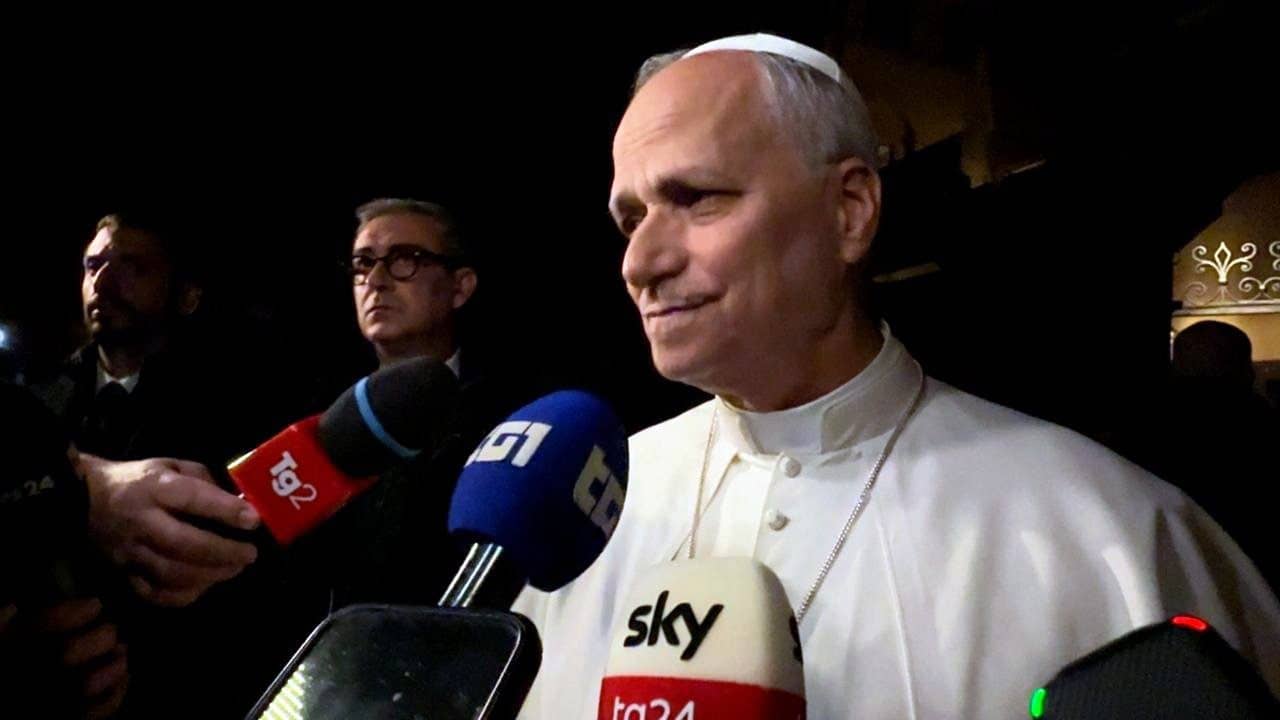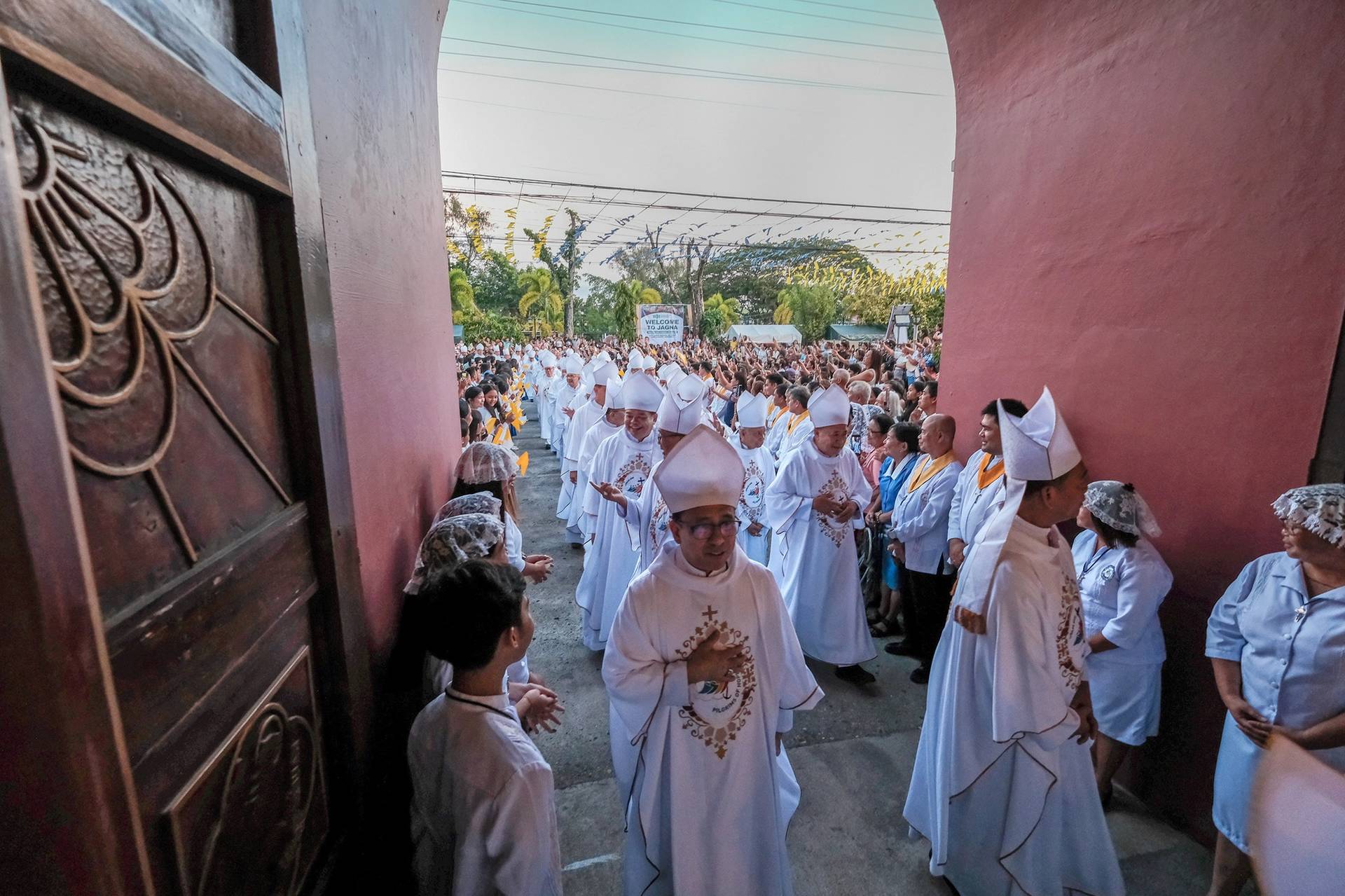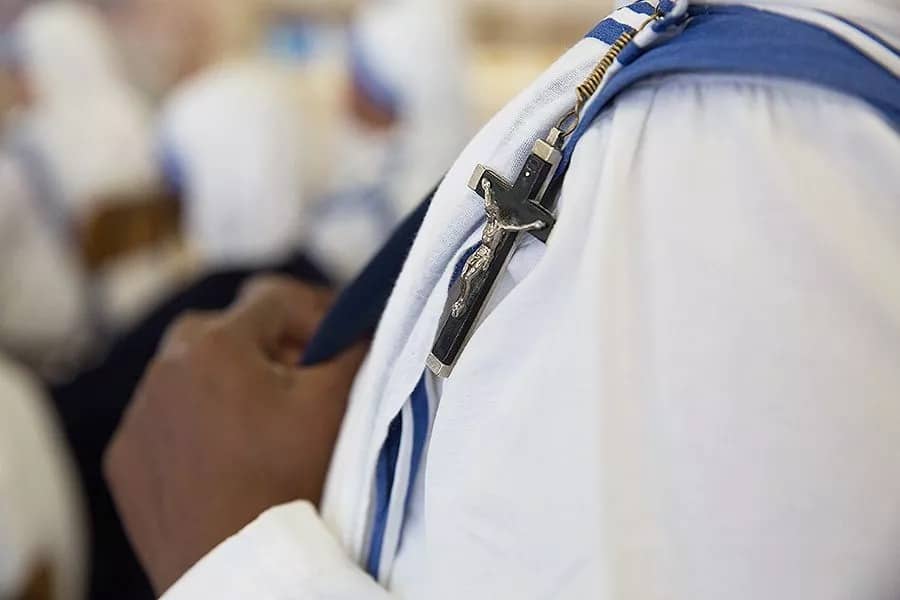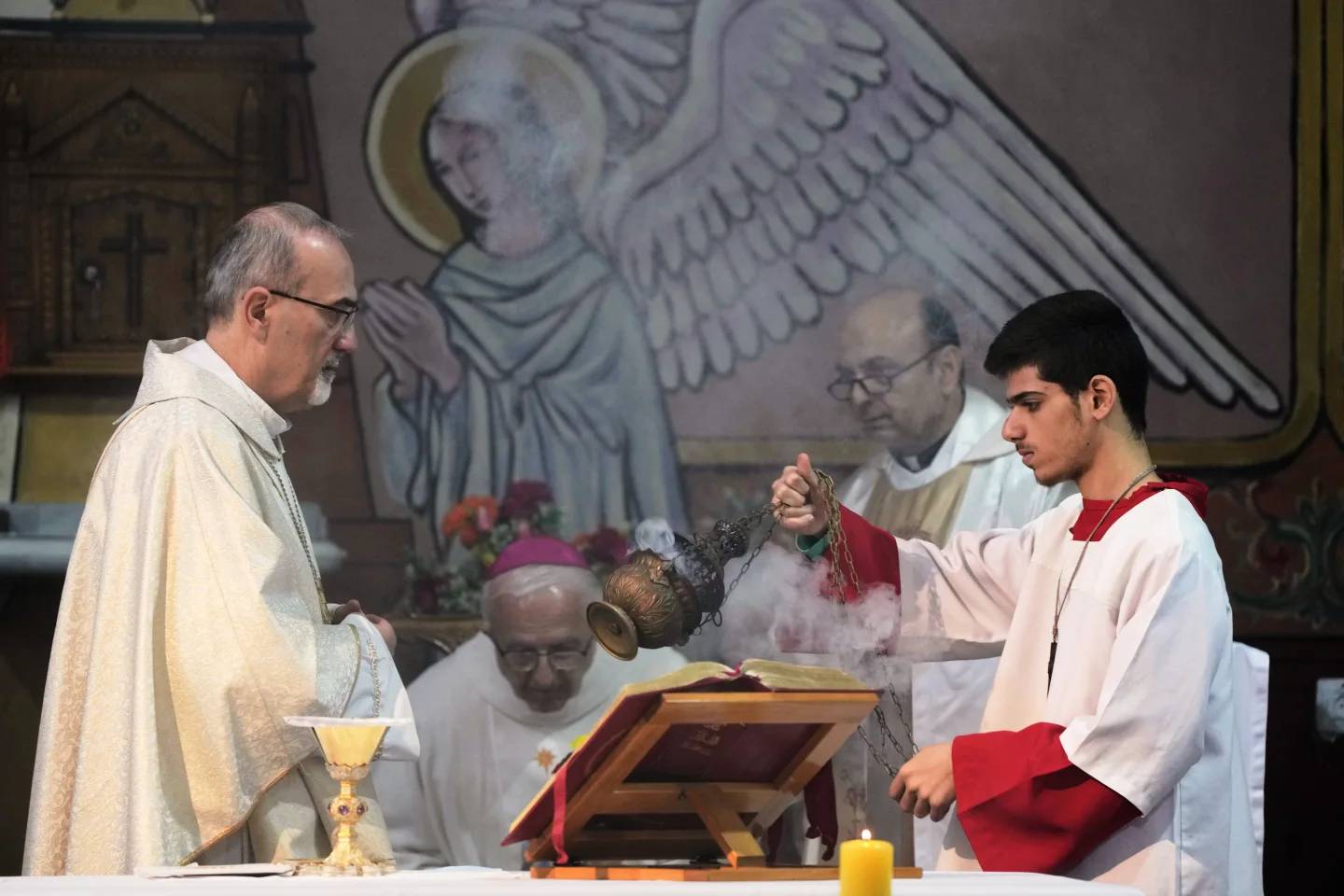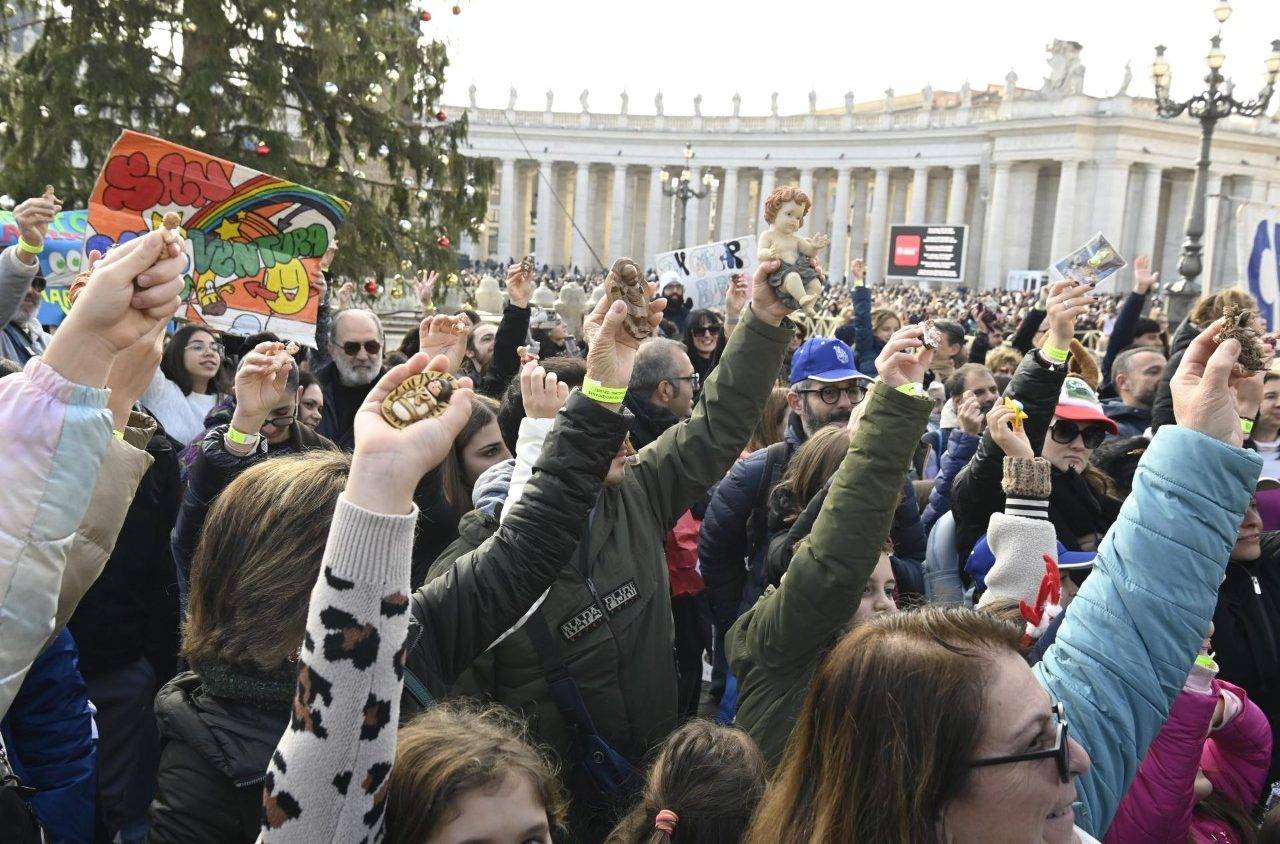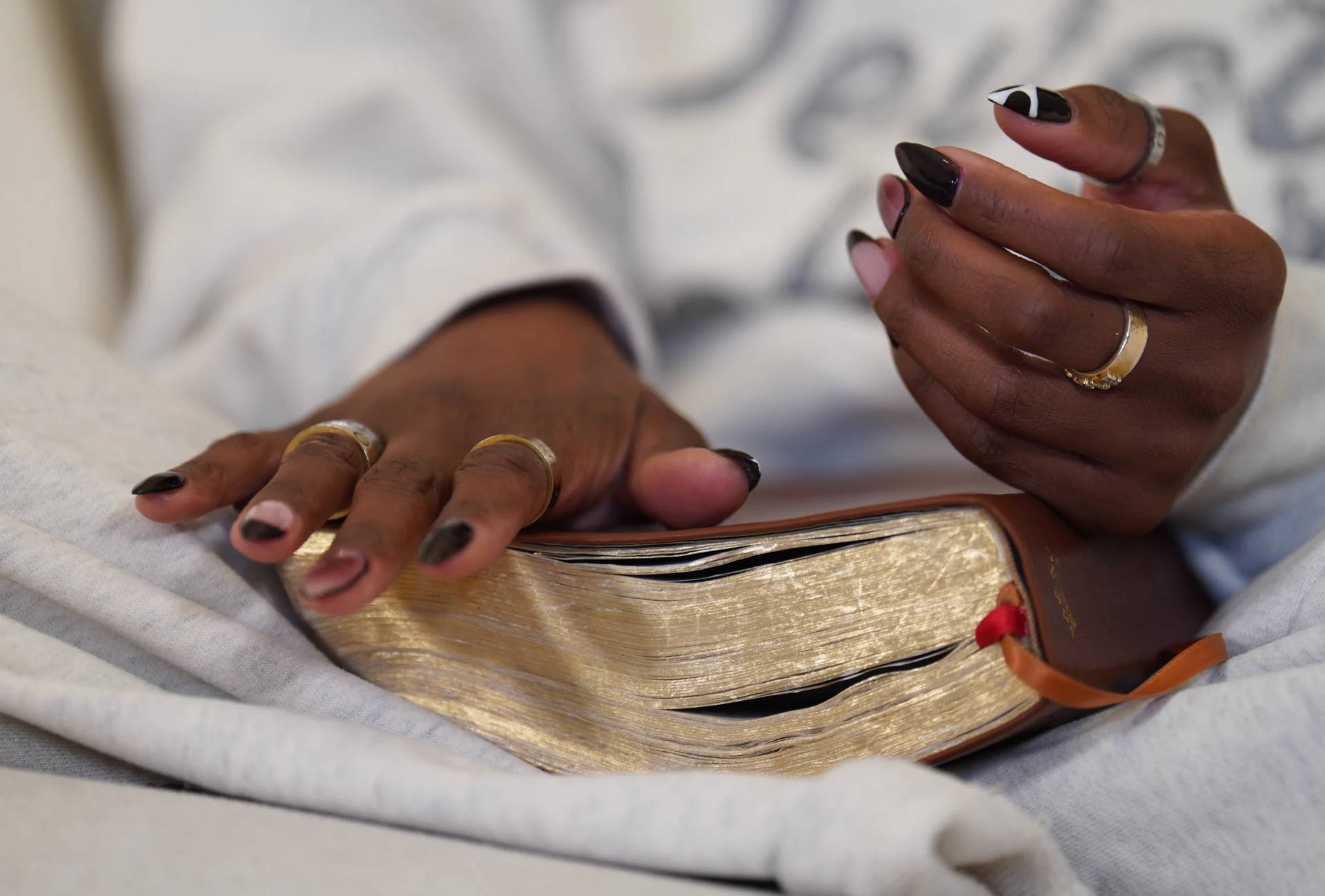BOGOTÁ, Colombia — Anti-Christian persecution is unquestionably a premier human rights challenge in the early 21st century. It’s happening not just in the Middle East but around the world, including nations where Christians are a strong majority.
Compassionate concern over that stark reality should not short-circuit legitimate debate over the positions some Christians take on social and political issues. And there is no suggestion here that Christians have a monopoly on pain, because plenty of other groups are suffering, too.
Yet the numbers nevertheless are eye-popping. Estimates vary, but even the low-end guess for the number of Christians killed each year for motives related to the faith works out to one every day.
Given the scale of this global horror, it’s sometimes easy to forget that behind the statistics are flesh-and-blood people whose experience is no less intensely personal for being part of a broader pattern.
Two encounters in Colombia last week — where a civil war has dragged on for a half-century and left 220,000 people dead, including scores of new Christian martyrs — drive that point home.
The first came on Wednesday with Bishop Misael Vacca Ramirez, who was kidnapped at gunpoint in 2004 and held for three days by a leftist guerrilla movement.
To be clear, Vacca is no stereotypical Church potentate.
Upon arriving at his modest family home in a working-class neighborhood of Bogotá, I first saw a man in a sleeveless jacket with simple street clothes. Thinking he was a doorman, I started to explain why we were there. A Colombian colleague cut me short by giving the man a hug — it turned out he was the bishop.
Vacca then invited us into his room, which was spartan enough to make a monastic cell seem like a Hilton junior suite.
With regard to the kidnapping, Vacca explained that in July 2004, he was making a pastoral visit to a small town in a zone where the fighting was intense. A car was supposed to pick him up at 2 p.m., but to reach it, he had to cross a local river, and his passage was blocked by four guerrillas — as it happens, two unmarried couples.
At first he was told to wait an hour, then another, and then overnight. The next morning he was told that he would be taken to a place that was a five-minute walk away, but ended up being forced to walk more than seven hours to an isolated house in the countryside.
Somehow word got out about his location, and a large crowd of local peasants showed up pleading for his release.
At that point in the narrative, Vacca lost it. He broke down in tears, briefly gathered himself, and then broke into sobs again, unable to continue the conversation.
Vacca explained that his emotion wasn’t related to his own ordeal, since he was released a couple of days later unharmed. He was weeping, he said, for all those Colombians who have faced similar circumstances, but weren’t so lucky.
Violence in Colombia is fueled alternately by the military, various leftist guerrilla movements, right-wing paramilitaries, and heavily armed drug cartels. Among its victims are 92,000 people who have simply “disappeared,” leaving their families with the agony of uncertainty.
“So many victims,” Vacca said. “So much pain.”
Granted, the motives for which the guerrillas detained Vacca may have had nothing to do with religion. Yet his choice to be in a war zone, despite the risk, was clearly rooted in his faith, making the kidnapping no less an example of anti-Christian persecution.
The other experience came Thursday with the Rev. Gabriel Izquierdo, a Jesuit priest who, during the 1990s, directed the Center for Investigation and Popular Education, which works on land reform, environmental protection, human rights abuses, and a series of other social causes.
On May 19, 1997, two activists working for the center, Mario Calderon and Elsa Alvarado, along with her father, Carlos Alvarado, were shot to death by a right-wing paramilitary group at their Bogotá home.
In a display of just how much rage a vigorous defense of the poor and human rights can generate, Calderon alone was shot 57 times.
Izquierdo, with tears streaming down his face, said, “They did it to punish us.”
To date, only one person has been convicted for involvement in the crime. Two were acquitted, and two more still face investigation. Izquierdo said he’s convinced that a notorious right-wing paramilitary leader named Carlos Castaño Gil ordered the killings.
Izquierdo said that he asked a prosecutor why the paramilitary didn’t target him, since he was the organization’s director. The answer was, “They didn’t kill you because they wanted to terrorize the people in the field working for human rights.”
Izquierdo had no hesitation in calling his lost colleagues and friends “martyrs.”
“Without the inspiration of the Church and of Jesus Christ, many of these things wouldn’t have happened,” he said, shaking with emotion.
Vacca’s kidnappers were Marxist guerrillas while the center workers died at the hands of a conservative paramilitary, demonstrating that anti-Christian persecution can come from the left and the right alike.
The reaction of Vacca and Izquierdo at summoning these memories also illustrates another truth.
When you put a face, a name, and a life story on the statistics about persecution, it changes the emotional register — and, perhaps, creates a deeper sense of urgency to do something about it.
An interview with Colombia’s top bishop
Archbishop Luis Augusto Castro Quiroga clearly enjoys the respect of his fellow bishops in Colombia as well as a wide cross-section of society. That’s no mean feat in a country whose affairs have been defined for more than a century by violent clashes between left and right, as well as between elites and the lower classes.
Castro was first elected president of the Colombian bishops’ conference in 2005, and was elected again in 2014 for another three-year term.

Now 73, Castro has been asked several times to join the current peace talks in Havana, Cuba, between the Colombian government and the country’s main Marxist guerrilla movement, the Revolutionary Armed Forces of Colombia (FARC). He’s seen as a trusted broker by both sides.
Archbishop Thomas Wenski of Miami, a main interlocutor for the US bishops with the Church in Latin America, praised Castro for his leadership role in a telephone interview on Wednesday.
“In other countries, groups such as Pax Christi and Caritas are often in the lead in the push for peace, and the bishops follow them,” Wenski said. “In Colombia, bishops such as Castro are on the front lines.”
Castro sat down with Crux for an interview about the price paid by the Church amid Colombia’s civil war, which has stretched on for more than 50 years, as well as the prospects for peace.
Q. What’s been the role of the Church during these decades of war?
A. I’ll begin with something I think is fundamental, which is that the core role of the Church has been simply being present. The Church has stayed put in difficult zones, where the conflict has been most intense.
One time a bishop said to his parish priests during a period when the community was under threat, “You have to be the last to leave. You have to be here until the very end with the community.”
I remember being in the south of the country once, during a time when a lot of fighting was going on, and I spent the night there. The next morning the people came to the house to say, “Last night we slept really well.” When I asked why, they said, “Because you were here.”
Q. What about your role in the peace process?
A. We’ve issued continual invitations to peace and reconciliation. They’re both really difficult, and so far we haven’t succeed in reaching either one, but they’re at the heart of our approach.
Obviously, we realize this war has its origins in injustice and the marginalization of so many people. It’s also about the challenges facing the state, because the Colombian state is very small relative to the number of regions the country includes. It can’t be present — or, perhaps, it doesn’t want to be present, it’s not interested in being present — in many places. As a result, other forces begin taking over the functions of the state, which is often what the guerrillas do.
There are whole zones in Colombia where if you ask a young person what he wants to be when he or she grows up, they’ll say a guerrilla because they’re the authorities there, the points of reference.
One of our most valuable contributions has been being present where the state is absent, and also where there’s an economic vacuum. In Colombia, that often means a strong presence of the drug cartels.
In those situations, the Church has tried to organize the people and give them the courage to say no to the drug traffickers. There are many such initiatives to help liberate the people from a condition that’s basically a form of slavery.
Q. What’s the relationship between the Church and the guerrilla movements?
A. Let’s begin with FARC (the Revolutionary Armed Forces of Colombia, the principal group.) They’ve always been very respectful of the Church. They see with their own eyes what the Church does.
When somebody asks me what kind of security we have for our priests, I always say that the only defense we have is to be priests of integrity. If they see us that way, they’ll leave us alone.
The only time they tried to kidnap me was when I was stopped in a street, and a guerrilla commander came up to tell me that I had to come with him. I said I’d go with him, but first I wanted him to release the others they had taken. [Note: At the time, the local FARC unit had detained 10 other people, including social and political leaders.]
Two days later, I was in my office around 9 p.m. and I heard a loud noise coming towards my office. I went outside, and there were the 10 prisoners. They told me that the commander had ordered that they be delivered to me!
The ELN (the National Liberation Army, another guerrilla group) is more ambiguous. On the one hand, it arose with a Christian inspiration, for example Father Camilo Torres and liberation theology. On the other, they tortured and killed a bishop. [Note: The reference is to Bishop Emilio Jaramillo Monsalve of Arauca, killed in 1989.] They may have killed others, and I can’t say those were mistakes.
Q. Is there a single figure whose suffering sums up the story of the Church in Colombia? Would it be Duarte, for example? [Archbishop Isaias Duarte Cancino of Cali was shot to death in March 2002 outside a church in one of his city’s poorest neighborhoods.]
A. No. Duarte was killed by the drug traffickers, not by the guerrillas. I can’t say that the guerrillas never lie, but they’ve said that they’re very concerned to make clear that they weren’t the archbishop’s killers. I believe it.
Q. More than five years have passed since Duarte’s death. Why haven’t the bishops of Colombia opened a cause for his beatification?
A. It’s for the same reason that the beatification cause of Jaramillo failed. We started a cause for him, but right now it’s stalled in Rome. They say he wasn’t killed because of hatred for the faith.
Q. Wasn’t the same thing true for Archbishop Oscar Romero of El Salvador?
A. When Romero was beatified, it meant that he was killed in hatred of the faith.
Q. That’s debatable, isn’t it? The argument for Romero, as well as figures such as the Rev. “Pino” Puglisi of Sicily, is that they were martyrs not for hatred of the faith, but what St. John Paul II called “hatred of charity.” Couldn’t Duarte and Jaramillo be examples of that?
A. It could be, sure. I remember where John Paul II made this distinction, and it’s very interesting. Anyway, the reality is that the first case we opened was Jaramillo, and all the documentation was sent to Rome. At the moment, it’s not moving forward.
Q. Who is the emblematic martyr of Colombia?
A. The price paid by the Church has been high, but I’ve never tried to think of a single emblematic case. Whenever a priest is killed and someone asks me what I think about it, I always say we’re simply sharing the suffering of the people, nothing more. It’s not that we’ve suffered any more than the others who have been killed.
What we have in Colombia isn’t really ‘anti-Christian’ persecution. What we have is widespread violence that affects the Church, too, because the majority of victims are Christians. It’s not a religious war.
Q. What do you want the world to know about Colombia’s martyrs?
I think we have to reflect more about what martyrdom means, and not just in a religious context. I don’t like distinguishing between one type of martyr and another.
Mathematically, the number of victims in Colombia is scandalous. We’re talking about almost 8 million. Every victim probably had three close family members, who have also suffered from the violence. That’s two-thirds of the country.
The number is astronomic. In that context, what’s the point of focusing on what we’ve suffered as the Church? The whole nation has suffered.









